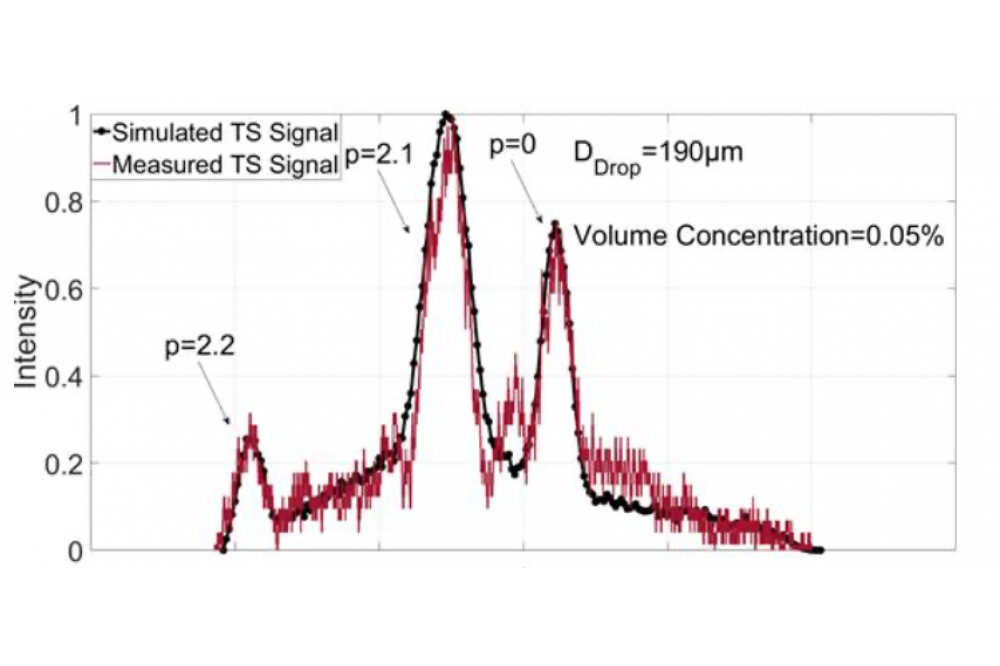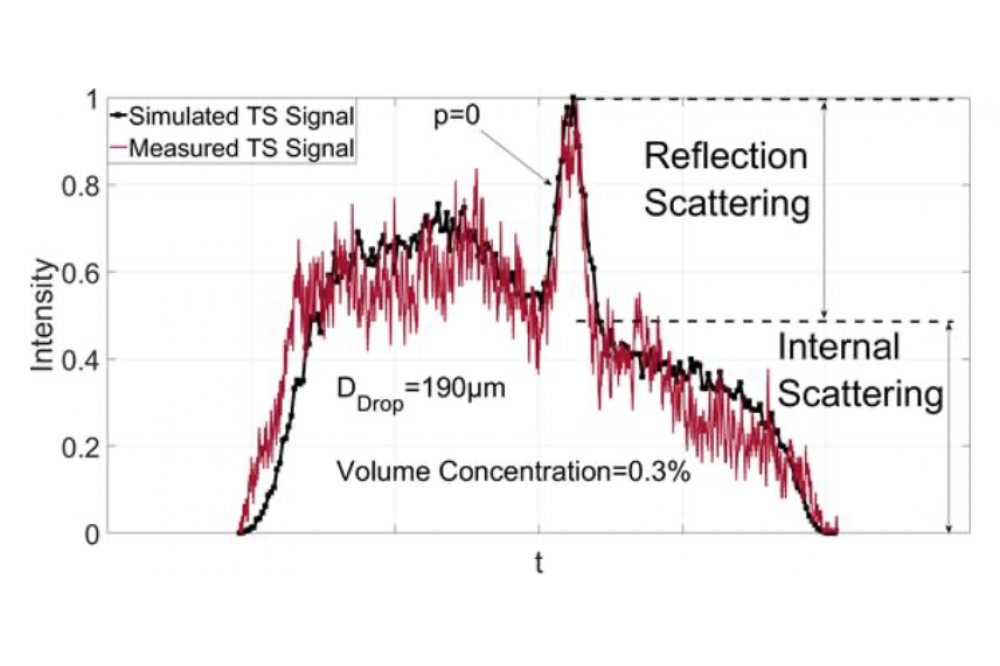Determination of the Particle Loading of Drops in a Spray
Introduction
Colloid suspension droplets are widely encountered in industrial processes, for instance fuels with dispersed, metallic nanoparticles, metallic paints with embedded aluminium flakes, colloid suspension droplets (e.g. ink-jet printing) or encapsulation of particles, in which a liquid layer covers the particle, typical in pharmaceutical applications. It is of interest to characterize such droplets using not only the drop size, but also the colloidal concentration. Several existing optical measurement techniques can measure the size of a colloid droplet [1, 2]; however, few techniques have been introduced to measure the colloidal concentration [1, 3]. The Time-shift measurement technique is a potential way to measure the colloidal concentration [2, 4]. The three-dimensional polarized Monte-Carlo ray tracing method is used to simulate the time-shift signal, when the colloidal droplet passes through the laser sheet. The goal is to identify signal characteristics which may be used to estimate the colloidal concentration from individual droplets, in addition to their size and velocity.
Methods
In the present study for the simulation of the time-shift signal, a three-dimensional polarized Monte-Carlo ray-tracing method is used to simulate the time-shift signal more precisely. In this case, instead of the HG phase function for updating the new propagation direction, rejection sampling is used to generate the new deflection angle and azimuthal angle after the scattering event with internal colloidal particles. For the scattering event between the light ray and the drop surface, the Mueller matrix is used to calculate the Stokes vector for the reflected light ray and transmitted light ray, which is described in [4] for detail. This polarized Monte Carlo method is then used to examine signal generation in a time-shift device as a function of colloidal concentration.
Results
The time-shift signals were simulated and compared with the experiment results. The agreement between the simulation and the experiment is very good, as the figures illustrate.
Discussion
Within this project, a Monte Carlo approach is used to simulate the polarized laser light scattering from a colloidal suspension droplet. The code was applied to simulate time-shift signals from colloidal droplets, resulting in very good agreement with experimentally obtained results. Further efforts will be made to estimate the volume concentration of the colloidal particle. Several extensions of the present code are planned in order to address practical measurement situations. For one, time-shift signals obtained for polydispersed colloid particles will be examined, starting with bimodal size distributions. The aim would be to identify signal features which may be useful in estimating also the size of the colloidal particles. A second extension foresees a non-uniform spatial distribution of the colloidal particles in the droplet. This situation occurs in droplets with metallic nano-particles, in which the settling velocity of the particles is significant. In this case the aim would be to identify signal features alluding to a non-homogeneous spatial distribution of the colloidal particles in the droplet.






